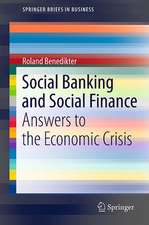Bank Credit Extension and Real Economic Activity in South Africa: The Impact of Capital Flow Dynamics, Bank Regulation and Selected Macro-prudential Tools
Autor Nombulelo Gumata, Eliphas Ndouen Limba Engleză Paperback – 18 aug 2018
| Toate formatele și edițiile | Preț | Express |
|---|---|---|
| Paperback (1) | 652.17 lei 6-8 săpt. | |
| Springer International Publishing – 18 aug 2018 | 652.17 lei 6-8 săpt. | |
| Hardback (1) | 657.73 lei 6-8 săpt. | |
| Springer International Publishing – 23 mar 2017 | 657.73 lei 6-8 săpt. |
Preț: 652.17 lei
Preț vechi: 767.26 lei
-15% Nou
Puncte Express: 978
Preț estimativ în valută:
124.83€ • 135.64$ • 104.93£
124.83€ • 135.64$ • 104.93£
Carte tipărită la comandă
Livrare economică 21 aprilie-05 mai
Preluare comenzi: 021 569.72.76
Specificații
ISBN-13: 9783319828527
ISBN-10: 3319828525
Ilustrații: XLVII, 582 p.
Dimensiuni: 148 x 210 mm
Greutate: 0.74 kg
Ediția:Softcover reprint of the original 1st ed. 2017
Editura: Springer International Publishing
Colecția Palgrave Macmillan
Locul publicării:Cham, Switzerland
ISBN-10: 3319828525
Ilustrații: XLVII, 582 p.
Dimensiuni: 148 x 210 mm
Greutate: 0.74 kg
Ediția:Softcover reprint of the original 1st ed. 2017
Editura: Springer International Publishing
Colecția Palgrave Macmillan
Locul publicării:Cham, Switzerland
Cuprins
Chapter 1) Introduction.- Chapter 2)The inverse transmission of positive global liquidity shocks into the South African economy.- Chapter 3) The impact of capital flows on credit extension: the counterfactual approach.- Chapter 4) Capital flow episode shocks, global risk and credit growth.- Chapter 5) Do bank and non-bank capital flows induce sectorial reallocation of credit away from the household sector?.- Chapter 6) Do components of capital flows induce sectorial reallocation of credit away from companies?.- Chapter 7) Stock returns, volatility and bust effects on economic growth.- Chapter 8) The interaction between credit conditions, monetary policy and economic activity.- Chapter 9) Credit conditions and the amplification of exchange rate depreciation and other unexpected macroeconomic shocks.- Chapter 10) What does the adjustment of the lending-deposit rate spread tell us about collusive behaviour pricing, transaction costs and adverse customer reaction?.- Chapter 11) Adverse credit supply shocks and weak economic growth.- Chapter 12) Credit supply shocks and real economic activity.- Chapter 13) Credit growth threshold and the nonlinear transmission of credit shocks.- Chapter 14) Credit regimes and the balance sheet effects.- Chapter 15) The banking risk-taking channel of monetary policy in South Africa.- Chapter 16) Financial regulation policy uncertainty and the sluggish recovery in credit growth.- Chapter 17) Excess capital adequacy and liquid asset holdings and credit.- Chapter 18) Credit loss provisions as a macro-prudential tool.- Chapter 19) The National Credit Act, monetary policy and credit growth.- Chapter 20) Loan-to-value ratios, contractionary monetary policy and inflation expectations.- Chapter 21) Repayment-to-income and loan-to-value ratios shocks on the housing market.
Notă biografică
Nombulelo Gumata holds a Master’s degree in Economics from the University of Johannesburg, South Africa. She in an economist at the Reserve Bank of South Africa and a part-time lecturer/tutor at the Centre for Education in Economics and Finance Africa (CEEF.Africa). CEEF.Africa supports students who study with the University of London for degrees and diplomas in Economics and Finance. She is the co-author of “Global Growth and Financial Spill-Overs and South African Economy” (Palgrave, 2015).
Eliphas Ndou holds a Bachelor of Science in mathematical statistics and economics, a Bachelor of Economic Science (Honours), a Master of commerce and a PhD in economics from the University of the Witwatersrand, South Africa. He is an economist at the South African Reserve Bank and a lecturer at the University of the Witwatersrand. He is the co-author of “Monetary policy and the Economy in South Africa” (Palgrave, 2013) and “Global Growth and Financial Spill-Overs and SouthAfrican Economy” (Palgrave, 2015).
Eliphas Ndou holds a Bachelor of Science in mathematical statistics and economics, a Bachelor of Economic Science (Honours), a Master of commerce and a PhD in economics from the University of the Witwatersrand, South Africa. He is an economist at the South African Reserve Bank and a lecturer at the University of the Witwatersrand. He is the co-author of “Monetary policy and the Economy in South Africa” (Palgrave, 2013) and “Global Growth and Financial Spill-Overs and SouthAfrican Economy” (Palgrave, 2015).
Textul de pe ultima copertă
This book presents empirical evidence that supports and facilitates a practical, integrated approach to how bank regulatory and selected macro-prudential tools interact with monetary policy to achieve price and financial stability. The empirical results contained in various chapters accompany in-depth historical analysis and counterfactual scenarios that enable proper policy evaluation and the interaction of bank regulatory, macro-prudential and monetary policy tools in South Africa. The presented evidence also identifies financial asset boom and bust episodes and the associated costly output losses. In addition, the authors explore the amplification of credit dynamics by commodity prices and sector credit re-allocation due to capital inflows shocks. The book’s empirical analysis uses a wide range of statistical and econometric approaches on granular data and economic variables to derive policy implications and recommendations. This in-depth quantitative analysis includes determining inverse transmission of global liquidity, as well as the effects of capital flows, lending-rate margins, financial regulatory uncertainty, the National Credit Act, bank capital-adequacy ratios, bank loan loss provisions, loan-to-value ratios and repayment-to-income ratios on the macro-economy.
Caracteristici
Explores the relationship between the South African economy, central bank policies and capital flows Offers empirically based policy recommendations Includes original analysis using VARs and impulse response functions













